We sat down with Melissa Pérez Capotosto, Ph.D.,RN, WHNP-BC, a long-time NHS3 participant, to learn more about her career in nursing and scientific research. Dr. Pérez Capotosto recently joined the growing group of NHS3 research collaborators who use NHS3 data to answer pressing public health questions and improve clinical outcomes. Her dissertation research specifically examined the use of fertility awareness-based methods (FABMs) among people seeking pregnancy.
The interview has been edited for clarity and length.
Welcome, Dr. Pérez Capotosto, we’re so happy to speak with you today. How did you find out about the Nurses’ Health Study 3?
It was in my first year out of school, way back in 2010 when I was working as a Labor and Delivery Nurse in Philadelphia. I noticed a flier that said, “Nurses, this is your study!”. I had some time, and contributing to research felt like part of my responsibility as a nurse, so I filled out the survey. This was back before I had any research aspirations; I was 21 years old and very happy working at the bedside as a maternal child nurse and learning from an incredible clinical team.
What do you love most about nursing?
Foremost, I’m very proud to be a nurse. When I worked as a Labor and Delivery Nurse, I was able to care for patients during some of the most momentous and vulnerable stages of their life. I feel honored and humbled to be able to be a part of that.
I continue to love interacting with and learning from my patients. I also enjoy how much room for growth you can have with a career in nursing.
What pushed you to get an advanced degree in nursing?
I pursued a degree as an Advanced Practice Registered Nurse (APRN), specializing in Women’s Health, so that I could see women throughout their lifespan.
Why did you decide to get a PhD?
As a nurse and nurse practitioner, I incorporate evidence-based research into my clinical care. I noticed patterns in my own clinical practice that brought up unanswered questions. For example, my patients were very knowledgeable about ways to prevent pregnancy, but as soon as their intention changed to, “now I want to get pregnant, what do I do?”, I noticed there was a knowledge gap regarding how to predict ovulation and time intercourse to align with the fertile window of the menstrual cycle. My dissertation research set out to examine the fertility-awareness based methods women were using to try to achieve a pregnancy.
How has your participation in NHS3 helped your research?
In 2019, I was working on my dissertation on fertility awareness-based methods in persons trying to conceive. I had also kept up with my own NHS3 participation and was filling out my survey as usual when I saw the question: “Are you actively trying to become pregnant?” This question was followed by another that asked people which methods they had tried to become pregnant. The response options included a bunch of natural family planning and fertility awareness-based methods.
As soon as I finished that NHS3 survey I thought to myself, “I need this data, I need to work with them.” So I went to the NHS3 website and filled out the external collaborator form. NHS3 was so helpful in finishing my dissertation because the data is so rich; 45,000 plus participants is so much bigger than anything I could have done in terms of collecting the same data myself.
What would you tell other nurses about joining the Nurses’ Health Study 3?
As an NHS3 participant, you are contributing such valuable health information to a team of researchers who will be able to utilize that data to impact clinical care. It is so gratifying to now be on the other side and use the data to generate new nursing knowledge. I was so excited to find out that a paper from my dissertation was going to be published in the journal Nursing Research because I am a nurse using data from other nurses to hopefully make meaningful contributions to our profession.
Where are you going to take your research next?
I am currently finishing up a post-doctorate in lifecourse epidemiology. I’m working with co-principal investigators, Dr. Emily Oken and Dr. Jorge Chavarro. Using data from Project Viva, a longitudinal parous cohort study, my research examines associations of infertility and mental health throughout the lifespan. I would someday like to see if I can replicate findings using the NHS3 cohort.
I also just submitted a grant to investigate the unique characteristics of people who fall somewhere between actively trying to conceive and not trying to conceive; what I term the “contemplating pregnancy” group. Pregnancy planning is so often thought of as a dichotomy, but it’s not a simple “yes, I’m trying to get pregnant,” or “no, I’m not.” There is a major opportunity to improve the clinical guidance on preconception and contraceptive counseling for those who are somewhere in between.
I learned so much during my first collaboration with NHS3, so I really hope to continue working with you all to hone my research skills. It’s an exciting time!
More about Dr. Pérez Capotosto:
Dr. Pérez Capotosto received her Bachelor’s of Science in Nursing from Villanova University in 2009. After graduation, she worked as a Labor and Delivery nurse in Philadelphia, where she fell in love with maternal child health care. In 2012, she graduated from Boston College with a Master’s degree in nursing, specializing as a Women’s Health Nurse Practitioner. In 2014, Melissa joined the clinical faculty at Boston College where she currently teaches Childbearing Nursing Theory. She also continues to work as a Women’s Health Nurse Practitioner in Boston. In 2021, Melissa completed her PhD in Nursing from Boston College, and in Spring 2024 she will be completing her Post-Doctorate in Life Course Epidemiology from the Harvard Pilgrim Health Care Institute.
Want to read more? You can access Dr. Pérez Capotosto’s publications below.
Pérez Capotosto, M., Lee, C. S., Jurgens, C. Y., Wang, S., Mitsunami, M., Charlton, B. M., & Chavarro, J. E. (2022). Predictors of Fertility-Awareness-Based Method Use among Women Trying to Conceive and Women Contemplating Pregnancy, Nursing Research, 72(5) 355-362. DOI: 10.1097/NNR.0000000000000666

